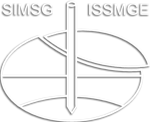Development of a Model Preparation Procedure for MICP-Treated Sand in Centrifuge Tests
Development of a Model Preparation Procedure for MICP-Treated Sand in Centrifuge Tests
Microbially-induced calcium carbonate precipitation (MICP) has been proven to be an effective method for mitigating soil liquefaction in laboratory tests and physical models. However, previous physical modeling where the entirety of soil within a model container is treated has limitations as it does not reflect field applications where treatment will have a limited spatial extent. A new modeling protocol was therefore developed to more accurately represent MICP treatment as it will occur in the field. This paper describes the protocol developed for constructing a centrifuge model using precast discrete MICP treated blocks placed within an uncemented stratigraphy. For this research, MICP blocks were precast using a PVC mold with embedded treatment ports. Ottawa F-65 sand was pluviated into the centrifuge model container to the desired elevation, the precast block was carefully lifted, inverted, and placed on top of the soil surface, and then model construction was completed by pluviating the remaining sand and saturating the model with a viscous fluid under a vacuum. Special handling techniques were developed and employed to place blocks with minimal disturbance for both the 1m and 9m radius centrifuge model containers. Shear wave velocity measurements were used throughout the process to track the improvement realized by MICP during the treatment process and then to evaluate the performance during earthquake shaking.
Soo-Min Ham; Alexandra C. M. San Pablo; D. W. Wilson; Jason T. DeJong
5th European Conference on Physical Modelling in Geotechnics (ECPMG2024)
New facilities, new equipment, measuring techniques
https://doi.org/10.53243/ECPMG2024-40
